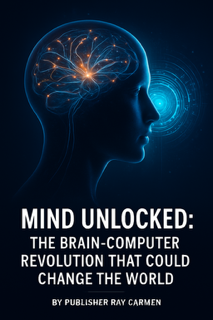By Publisher Ray Carmen
For decades, the idea of humans controlling machines with nothing but thought belonged to the realm of science fiction. Today, it is science fact — and it is transforming lives in ways once unimaginable.
Across the world, a quiet revolution is underway. Brain-computer interface (BCI) technology — devices that read neural signals and translate them into digital commands — is giving paralysed individuals the ability to move robotic limbs, communicate, and even walk again. What once seemed miraculous is becoming mainstream.
BCIs work by placing ultra-thin electrodes on or within the brain. These sensors detect electrical activity and send it to a computer, which decodes the signals, allowing the user to control digital devices, prosthetics, or even exoskeletons through thought alone. The result is a seamless mind-machine bridge: a world where intention becomes action.
Already, clinical trials have restored mobility to stroke victims, enabled speech for people who had lost their voice, and helped amputees regain a sense of touch. Tech giants and pioneering medical startups are now pushing the boundaries even further — aiming for memory repair, enhanced cognition, and new forms of communication.
For millions living with neurodegenerative diseases, paralysis, or traumatic brain injuries, the promise is profound: independence. Dignity. A return to life.
But the implications reach far beyond healthcare. With careful ethical guidance and global cooperation, BCIs could redefine how humanity interacts with technology — enabling faster learning, seamless human-machine collaboration, and revolutionary breakthroughs in everything from transportation to national security.
The brain-computer interface is no longer a distant dream.
It is here. It is real.
And it could soon reshape the world — thought by thought, life by life.

